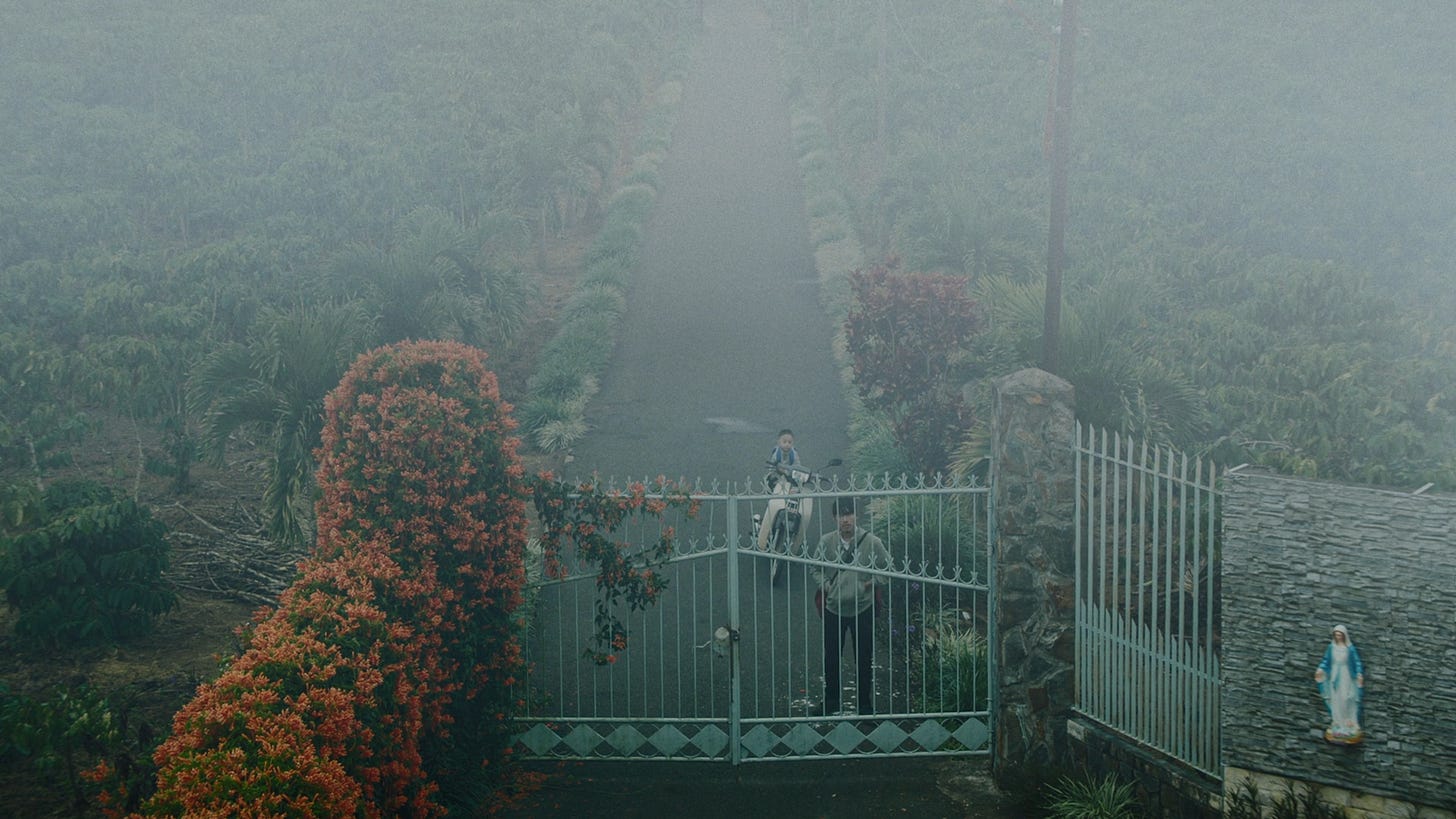Inside the Yellow Cocoon Shell (Pham Thien An, 2023)
Practically everyone who’s written about Pham Thien An’s Camera D’or winning Inside the Yellow Cocoon Shell has written about its litany of contemporary East Asian influences. This makes sense not just because the film wears its references on its sleeve, but also because the ways these influences do and don’t mix informs Cocoon Shell’s shortcomings.
To get it out of the way, Yellow Cocoon Shell is masterfully made. The film is almost distractingly beautiful, filled with virtuosic long takes and striking geometric compositions of the jungle. Just look at the film’s astonishing first shot, which opens on a soccer game, tracks with a mascot walking across the frame to settle on three friends, among them our protagonist Thien, discussing their relationships with faith, pauses to focus on background sports excitement, and returns to the conversation before redirecting focus towards an offscreen motorcycle crash. Oh, and did I mention that right before the crash, a thin layer of mist floats across the screen? In a single shot, where narrative focus shifts from foreground to background to offscreen space, Pham introduces most of the film’s threads. It’s a film about a search for faith, concerned with the fractured attentions of urban drift, aiming for a certain vein of “slow cinema transcendence”. In an interrupted erotic massage scene that surprisingly evokes the inciting incident of Nobody’s Hero (there’s definitely a reading of the film structured around Thien’s inability to cum), we learn that the victim of the motorcycle crash was Thien’s sister-in-law. As the family’s closest relative, Thien is unexpectedly given the responsibility of his nephew Dao.
The first hour of so of Yellow Cocoon Shell centers on Thien’s budding relationship with Dao. Then, traveling from Saigon back to his rural hometown for the sister-in-law’s funeral proceedings, the film takes a sharp narrative turn, focusing on Thien’s dissatisfaction with his life in Saigon, his desire for faith, and his relationship with an ex-girlfriend who has become a nun. The last section, where Thien searches throughout rural Vietnam for his missing brother, exists in a state of loose unreality, where past and present seem to converge and much of what we see onscreen is explicitly framed as a dream.
As the film progresses, it’s clear that Pham is riffing on Bi Gan and Apichatpong Weerasethakul. His highly choreographed shots, often composed for a narrative event that occurs much later, unmistakably recall Bi, while Yellow Cocoon Shell’s interest in Vietnam’s relation to its colonial past and its ambiguous dreamscape are clearly indebted to Apichatpong. Pham can’t help but reference. After a conversation with a rural village elder describing his experiences in the Vietnam War, Pham’s camera begins to explore the man’s house, pausing on a shot of the man’s window covered by a piece of gossamer thin fabric, quoting the war-haunted house of A Letter to Uncle Boonmee. Later, as Thien is at his most disoriented, he comes upon a glowing tree filled with butterflies straight out of Tropical Malady.
Pham’s film suffers the dreamier it gets. I suspect it’s because Bi’s style meticulously planned transcendence is directly at odds with Apichatpong’s atmospheric, open-ended aims. While it’s unfair to say that the Pham entirely operates in a Bi-adjacent mode, his film never shakes off a distant, disembodied quality associated with Bi’s mode of bravura filmmaking. The film has interesting ideas as it explores the lingering presence of the Vietnam War, its uneasy connection to the disappearance of Thien’s brother, and Catholicism’s monopolization of faith in Vietnam, but Pham fails to imbue these resonances into the atmosphere of the film. The film lacks a sense of possibility and consequently, Thien’s drift remains purely theoretical.




